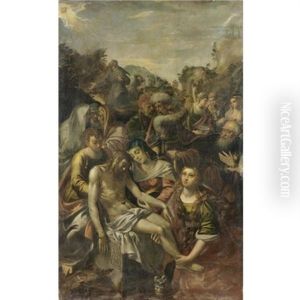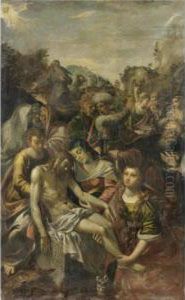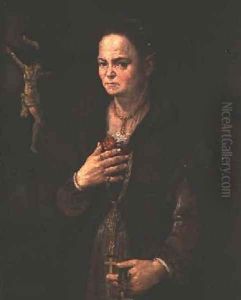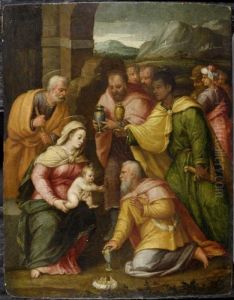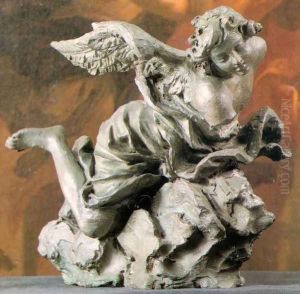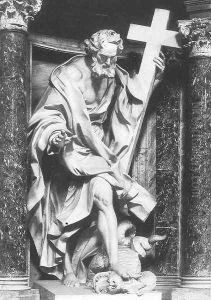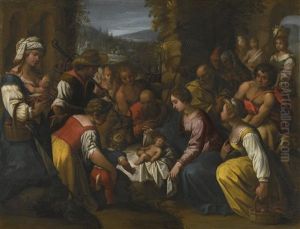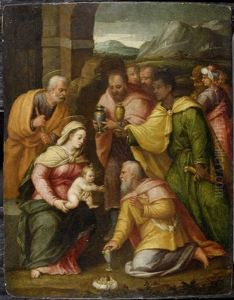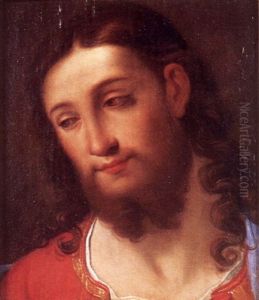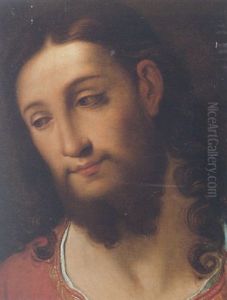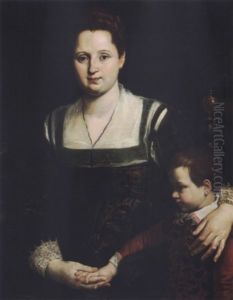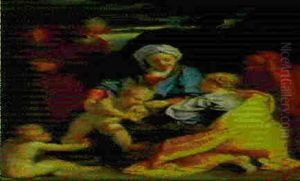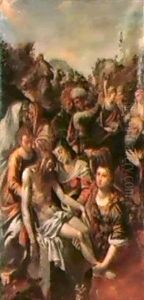Giuseppe Mazzuoli Paintings
Giuseppe Mazzuoli, born in 1644 in Siena, Italy, was a prominent sculptor of the Baroque period, known for his dynamic and expressive marble sculptures. His work is often characterized by its intricate detail, emotional intensity, and the fluidity of movement, hallmarks of the Baroque style. Mazzuoli came from a family with artistic inclinations, which fostered his early interest and development in the arts. Despite the limited documentation on his early training, it is believed that he was initially influenced by the works of local Sienese artists before moving to Rome, which was the epicenter of Baroque art during his lifetime. In Rome, Mazzuoli's talent quickly garnered attention, and he became a part of the vibrant artistic community, engaging with influential artists and patrons of his time.
Mazzuoli's work covers religious themes, mythological subjects, and portraits, reflecting the diverse interests of the Baroque period. One of his most recognized works is the group of sculptures he created for the Chapel of St. John the Baptist in the Duomo of Siena, which include figures of angels and saints, showcasing his ability to infuse marble with a sense of divine grace and movement. His sculptures often depicted figures in mid-motion, with drapery that appears to be caught in a gentle breeze, a testament to his mastery over the medium.
Beyond Siena and Rome, Mazzuoli's work found its way into various European collections, highlighting his international acclaim. Despite the high demand for his sculptures across the continent, Mazzuoli remained deeply connected to his Sienese roots, often reflecting the city's artistic traditions and influences in his work. His legacy is preserved in the numerous works he left behind, which continue to be studied and admired for their artistic and historical significance. Giuseppe Mazzuoli passed away in 1725, leaving behind a body of work that significantly contributed to the development of Baroque sculpture in Italy and beyond.
